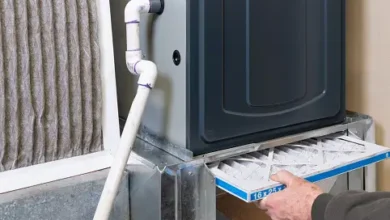what are various boilers and what is their cost?
what are various boilers and what is their cost?
wood boiler:
The outdoor wood boiler is a type of wood, oil, or gas boiler. An outdoor wood boiler or outdoor wood stove is a device that is 4-6 feet broad by 10 feet long. The firebox, which can be circular or square, the water jacket, the heat exchanger, and the weatherproof enclosure are the four basic components. The firebox can be 2 to 5 feet long and up to 4 feet in height. Water or a glycol-water solution surrounds the firebox and heat exchanger, absorbing heat from the burning wood. In most cases, heated water is pumped through insulated subterranean pipes to a heating load, where heat may be transmitted from the water to the load.
Typical outdoor wood furnaces
Standard outdoor wood boilers heat the firebox and expel the smoke directly. If the exhaust gas is not heated sufficiently, it becomes thick and black, and the resultant ash is not entirely rendered. These models, while useful, require more labour and are significantly less efficient than certain newer, more efficient variants.
Outdoor catalytic wood boilers
some contemporary outdoor wood boilers have a catalytic converter, which allows for a more efficient burn and the treatment of exhaust before it exits the machine. The price difference between these and ordinary units is significant. These are significantly less popular than outdoor gasification wood boilers.
Outdoor wood boilers with secondary combustion (gasification)
The operation of a gasification outdoor wood boiler. Secondary combustion air is used in gasifier wood boilers to burn extra wood gases. Most modern systems employ computer controls to guide variable volume of air at various phases of the burn process. Outdoor wood boilers that employ down draught gasification must achieve EPA Phase 2 Certification. Outdoor wood gasification boilers can use 30% to 50% less fuel than their regular counterparts. Outdoor wood stoves are a source of contention in the environmental community.
A badly utilized or designed outdoor wood boiler can create excessive unburned particulate matter, but studies show that when properly burnt, burning wood is still one of the most ecologically beneficial heating choices. The EPA launched a voluntary initiative in 2007 to urge manufacturers to lower particle levels. The United States Environmental Protection Agency (EPA) modified its clean air criteria for residential wood heaters in 2015; this is a mandated standard for sales in the United States. The new standards apply exclusively to new goods and have no impact on current wood heaters. At the moment, gasification boilers are the only ones that pass these emission restrictions.
furnace tune up:
While you are likely aware of the need of contacting a heating repair service when your system fails to work correctly, you may be unaware that regular furnace maintenance is as crucial in the long-term functioning of your heating and cooling system. Heater tune-ups are an effective preventative measure that provides excellent value for money. If you’re wondering if you need heater preventative maintenance this year, keep reading to see why you, like every other homeowner, should start scheduling furnace tune-ups.
Keeping your older furnace or heating system in excellent working order is also the best method to extend its lifespan and guarantee you get the most efficiency out of it each year. Without a furnace tune-up every year, your older HVAC system is significantly more likely to lose efficiency rapidly and fails more frequently, especially during peak usage hours when the temperature is coldest. Thus, furnace tune-ups performed by expert HVAC specialists maintain the remaining lifespan of your heating system, allowing you to avoid excessive heating bills, imminent malfunctions, and heating system replacement in the near future.
If your furnace or heat pump has been operating well in recent years, you may be wondering if it’s really important to arrange a heating tune-up before winter. Heating systems experience regular wear and tear throughout the season. While this wear and strain may not result in a breakdown, it may reduce furnace efficiency over time, resulting in higher-than-necessary heating expenditures. The best way to keep your energy expenditures as low as possible is to schedule a furnace tune-up each year to inspect and clean your system. This reverses the effects of wear and tear while also rectifying any efficiency losses caused by yearly usage, restoring your heating system to like-new condition and peak performance.
Ruud furnace:
Ruud furnaces are made by the same business that makes Rheem heating and cooling equipment. Many air conditioner and furnace manufacturers have many brands on the market. The only significant distinction between the two brands is how they are disseminated, as well as the brand name itself. When determining which Ruud gas furnace is ideal for your home, consider your location as well as the size of your property. This will tell you what type of BTU levels you’ll require as well as which AFUE rating is appropriate for your home. We’ve divided each region of all 50 U.S. states into a climate map below to help you decide which is ideal for you.
Zones 1, 2, and 3: 80% AFUE Zone 4: 90 to 93 percent Zone 5 AFUE: – 93 percent to 95 percent + AFUE
If you were building a new Ruud furnace in a Zone 1 climate state like Texas, where the winter temperature can be mild but mainly warmer all around, you would want to consider installing a Ruud Ultra U802V model furnace with an AFUE of 80 percent. This model would cost around $925 for the unit alone, with labour and installation fees totaling approximately $2,735 in total.
furnace replacement:
Depending on where you live and the climate, your furnace may be the most vital item in your home. It offers the fundamental warmth you and your family require to stay comfortable and even safe during the winter. However, it is generally a massive and intricate piece of machinery, which means it is expensive to repair and even more expensive to replace completely. Furnaces are built to last, but they will still wear down after a decade or two.
When it comes to furnace repair and replacement, a home warranty may be quite beneficial. With heating system coverage, you won’t have to shoulder the entire cost if your furnace fails due to normal wear and use. You may have the peace of mind of knowing you won’t have to spend full price to have a broken furnace replaced for the cost of a monthly premium and a minimal service call charge.
The average furnace has a lifetime of 20 to 30 years. This does not, however, imply that you can wait that long to replace yours. If your furnace has been suffering serious difficulties and requiring regular repairs for more than 15 years, you may need to consider replacing it. Regular maintenance, such as changing filters and cleaning the burners, will help you extend the life of your furnace. Hire an HVAC contractor to do annual inspections and tune-ups before to the winter season.
Ideally, you don’t want to wait until your furnace fully fails before replacing it. This is something that may easily happen in the dead of winter, leaving you without a method to heat your house. Instead, monitor the performance of your furnace, both in terms of efficiency and cost. Here are several indicators that it may be time to consider a replacement.
The furnace requires frequent repairs, which are becoming increasingly expensive.
The furnace is generating strange noises like buzzing or rattling.
The furnace is spewing dust, soot, or rust, particularly around the register.
The furnace begins to cycle on and off more often.
The heat exchanger has a fracture in it.
You’re not using it as often as you used to, yet your heating expenditures are increasing.
Your home is unevenly heated, with some areas being warmer than others.
Rust, fractures, or corrosion are visible around the furnace.
The humidity in your home is rising.
Some of these warning flags may just suggest the need for repair or maintenance. However, when they accumulate at the end of the appliance’s lifespan, they can be indicators that it’s time to replace the furnace totally. If a replacement is required, an HVAC specialist will be able to inform you, and you can always obtain a second opinion from another contractor to put your mind at ease.
york furnace:
York has a long history in the HVAC industry, so it’s no surprise that commercial and residential clients all around the world entrust them with their heating and cooling needs. The business offers an adequate assortment of high-efficiency furnaces, all of which have an AFUE of 95 percent or above and are certified. Furthermore, all of their models include secondary heat exchangers for increased efficiency, reduced heat loss, and less fuel waste. The price point is another feature that Canadians appreciate about York. York is a value brand, so you’ll spend less for a well-made furnace that’s also dependable, long-lasting, and backed by a great guarantee. In fact, owing to their lifetime heat exchanger warranty, York provides one of the finest furnace warranties in the industry.
York provides a furnace for almost any homeowner, including single-stage, two-stage, and modulating models. However, when it comes to high-efficiency furnace types, customers don’t have a lot of options. After removing their 80-percent AFUE furnaces, which are just insufficient for Canadian winters, the business offers only five types. Another thing to know about York is that their emphasis is on economy, efficiency, quality, and dependability, thus they don’t have much to offer in terms of novel technology. Some sources claim reliability concerns and higher-than-average breakdowns; thus, York might work on improving this. While other HVAC manufacturers use cutting-edge features and technology to increase the performance, efficiency, and convenience of their furnaces, York does not.
York furnaces provide a reasonable selection of furnace models that are appealing to the ordinary homeowner. Despite their limited choices, York offers something to fit almost any house, as long as you aren’t dead bent on buying the most sophisticated furnace technology. Furthermore, there have been occasional consumer complaints about the dependability of York furnaces, although incorrect installation and maintenance are frequently to blame. Furthermore, if anything goes wrong with your York furnace, you’ll be entitled for a repair or replacement under the complete guarantee. If you want to get the most out of your York furnace, have it installed and serviced on a regular basis by a skilled and certified HVAC technician.



